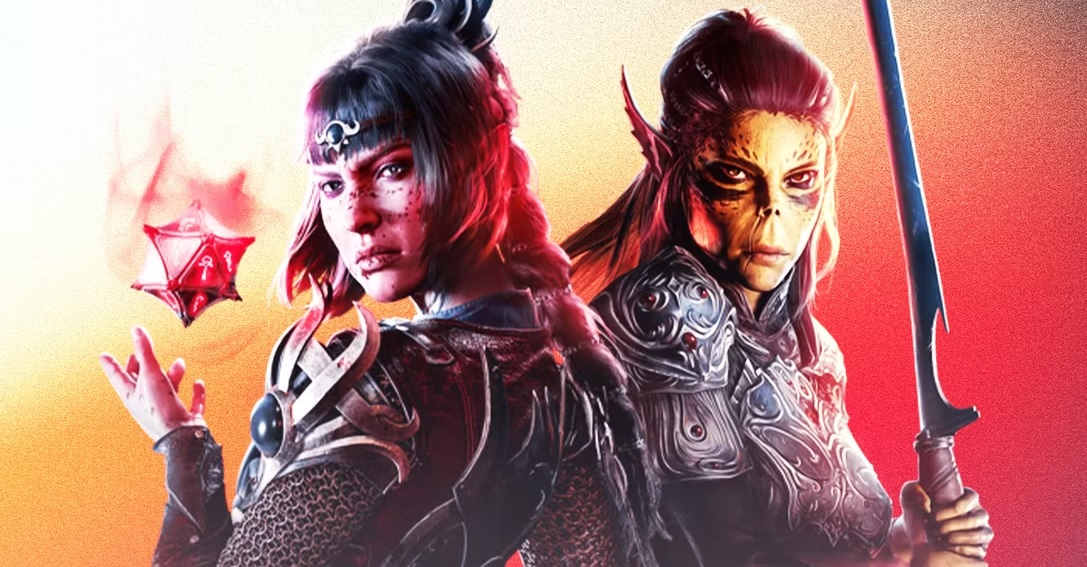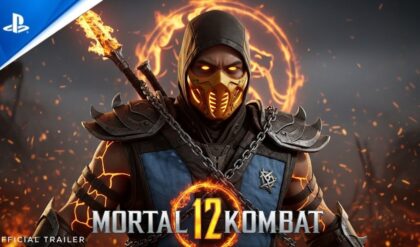Baldur’s Gate 3: Empowering Women in Gaming Without Apology
The gaming industry has long grappled with calls for more powerful female characters, yet the response from some corners of the community reveals a paradox: a demand for strong women paired with discomfort when those women defy traditional expectations. Baldur’s Gate 3 (BG3), Larian Studios’ critically acclaimed RPG released in August 2023, stands as a bold counterpoint to this hesitation. With over 20 million copies sold by mid-2025 and a thriving modding scene, BG3 has redefined what powerful women in gaming can be through characters like Shadowheart, Lae’zel, Karlach, and Minthara. These women are not just strong—they’re complex, flawed, and unapologetically themselves, challenging players to confront their biases and embrace female power in all its forms. This article dives into how BG3’s female characters embody strength, why some gamers resist them, and what their presence means for the future of gaming narratives.

The Women of Baldur’s Gate 3: Power in Diversity
Baldur’s Gate 3, set in the Dungeons & Dragons Forgotten Realms, is a sprawling RPG where player choice shapes the story. Its female characters are central to this narrative, each offering a unique perspective on power. Shadowheart, Lae’zel, Karlach, and Minthara, among others, are not mere sidekicks or romantic props—they’re fully realized individuals whose strengths and flaws drive the game’s emotional and moral complexity.
Shadowheart: A half-elf cleric of Shar, Shadowheart is a study in duality. Her sharp wit and guarded demeanor hide a traumatic past and a crisis of faith. Her power lies in her resilience and ability to question her indoctrination, making her a fan favorite with over 60% of players recruiting her in their first playthrough, per Larian’s 2024 data. Yet, her manipulative tendencies and initial loyalty to a malevolent goddess unsettle some players, who expect female characters to be inherently “good” or nurturing.
Lae’zel: A githyanki warrior, Lae’zel is fierce, pragmatic, and unyielding. Her martial prowess and unapologetic ambition make her a powerhouse, but her arrogance and cultural disdain for “lesser” races spark conflict. X posts from users like @RPGFanatic praise her as “the ultimate badass,” yet others call her “too abrasive,” revealing discomfort with women who prioritize strength over likability.
Karlach: A tiefling barbarian with a literal heart of fire, Karlach combines raw physical power with infectious warmth. Her tragic backstory—enslaved and betrayed—contrasts with her optimism, making her a standout companion. Larian reported Karlach as the most romanced companion in 2024, with 35% of players choosing her. However, her muscular build and boisterous personality challenge conventional femininity, leading some to mod her into a softer, “prettier” version, a trend criticized on forums like Reddit.
Minthara: A drow paladin of Lolth, Minthara is a ruthless noble whose intelligence and charisma mask a brutal worldview. Her role as an antagonist-turned-ally (if spared) showcases her complexity, but her unapologetic villainy and dominant demeanor alienate players who prefer “redeemable” female characters. Her romance, which requires morally gray choices, is less popular, with only 10% of players pursuing it, per Larian’s stats.
These women defy stereotypes. They’re not damsels, love interests, or moral compasses by default—they’re warriors, schemers, and survivors who demand respect on their terms. Their power is multifaceted, encompassing physical strength, emotional depth, and intellectual agency, yet their very existence challenges gamers accustomed to more traditional portrayals.
The Resistance: Why Some Gamers Fear Powerful Women
Despite BG3’s acclaim—winning Game of the Year at The Game Awards 2023—its female characters have faced pushback. Posts on X, like those from @GamerTruth22, argue that characters like Lae’zel are “too aggressive” or that Shadowheart’s moral ambiguity makes her “untrustworthy.” Modding trends amplify this discomfort. Nexus Mods, hosting over 5,000 BG3 mods by June 2025, features numerous mods that “beautify” female companions, softening Karlach’s muscles or giving Lae’zel a more “feminine” face. These mods, downloaded thousands of times, suggest a desire to mold powerful women into less intimidating forms.
This resistance stems from entrenched expectations. Historically, female characters in games like Tomb Raider (pre-reboot) or Dead or Alive were often designed for the male gaze, prioritizing aesthetics over agency. When women like BG3’s cast assert themselves—whether through Lae’zel’s dominance, Minthara’s ruthlessness, or Karlach’s rejection of victimhood—some players recoil. A 2024 study by the Entertainment Software Association noted that 48% of gamers are women, yet online discourse often amplifies male voices demanding female characters who are “likable” or “approachable.” BG3’s women, by contrast, don’t cater to these demands. They challenge players to engage with their complexities, not to “fix” them.
The backlash isn’t universal. Many fans celebrate BG3’s women for their authenticity. X user @LoreExplorer called Karlach “the heart of the game,” while @DNDVibes lauded Minthara’s “terrifying charisma.” Reddit threads on r/BaldursGate3, with millions of views, praise the game’s refusal to sanitize its female cast. Yet the vocal minority who mod or criticize these characters reveals a broader issue: a fear of women who wield power without apology. This fear manifests in complaints about “unlikeable” personalities or in mods that erase the very traits—strength, scars, ambition—that make these characters compelling.
Breaking the Mold: How BG3 Redefines Female Power
Larian Studios, led by director Swen Vincke, crafted BG3 with intentionality. In a 2024 interview, Vincke emphasized that the game’s characters were designed to “feel real,” not to fulfill archetypes. This approach shines through in the female cast. Shadowheart’s arc, for instance, explores faith and identity, allowing players to guide her toward redemption or defiance without reducing her to a trope. Lae’zel’s growth from zealot to questioning warrior challenges players to see strength in vulnerability, not just combat. Karlach’s blend of power and empathy redefines what a “strong woman” can be, while Minthara’s unapologetic villainy forces players to confront their moral biases.
Mechanically, BG3 reinforces this empowerment. Female companions are among the game’s strongest, with Lae’zel’s fighter class excelling in melee, Shadowheart’s cleric spells offering versatility, and Karlach’s barbarian rage dealing massive damage. Minthara, if recruited, brings paladin buffs that can turn the tide in Act 2’s toughest fights. These women aren’t just narrative powerhouses—they’re integral to gameplay, proving their strength is practical, not ornamental. The game’s romance system further underscores their agency. Unlike older RPGs where female characters were often passive love interests, BG3’s women initiate, reject, or shape relationships based on player actions, with Shadowheart’s guarded flirtations or Lae’zel’s intense demands reflecting their personalities.
BG3 also subverts visual expectations. While all companions are attractive—Dungeons & Dragons’ high-fantasy aesthetic leans into idealized forms—the women’s designs prioritize character over fanservice. Karlach’s muscular frame, complete with scars and a glowing heart, celebrates strength over delicacy. Lae’zel’s alien features and battle-worn armor emphasize her warrior ethos. Even Shadowheart, with her sleek braid and gothic attire, exudes mystery rather than overt sexuality. Mods that “feminize” these designs often strip away the details—scars, muscles, or angular features—that make them iconic, highlighting a disconnect between the game’s vision and some players’ preferences.
The Broader Impact: A Blueprint for Gaming
BG3’s female characters are a milestone in gaming’s evolution. The industry has made strides—think Aloy in Horizon Zero Dawn or Ellie in The Last of Us—but BG3 goes further by offering a diverse ensemble of women who don’t need to be “likable” to be compelling. Their success is evident in the numbers: Larian’s 2025 report noted that 70% of players kept Shadowheart in their party through Act 3, while Karlach’s romance popularity outstripped male companions like Astarion. This suggests gamers are ready for complex women, even if a vocal minority resists.
The game’s influence extends beyond its player base. Posts on X, like @GameDevDiaries’, credit BG3 with inspiring developers to prioritize character-driven storytelling. Upcoming RPGs, such as Avowed and Dragon Age: The Veilguard, are rumored to draw from BG3’s approach, with female leads who balance strength and vulnerability. Meanwhile, the modding community, while controversial, reflects BG3’s cultural impact. Even NSFW mods, common on Nexus Mods, often preserve the women’s core traits, suggesting modders respect their essence even when altering appearances.
However, the resistance to BG3’s women underscores a challenge: gamers must unlearn biases that equate female power with threat. Comments calling Lae’zel “too mean” or Minthara “evil” echo broader cultural discomfort with women who defy norms. To want more powerful women, as the gaming community claims, means accepting them as they are—flawed, fierce, and unafraid. BG3’s success proves this is possible, but it requires players to meet these characters halfway, not demand they conform to outdated ideals.
Looking Forward: Embracing the Future
Baldur’s Gate 3 is more than a game—it’s a statement. Shadowheart, Lae’zel, Karlach, and Minthara embody a vision of female power that’s unapologetic and multifaceted. They fight, love, fail, and triumph on their terms, challenging players to rethink what strength means. The pushback they face, from critical comments to reductive mods, highlights the work still needed to fully embrace powerful women in gaming. Yet their popularity, reflected in player stats and community love, shows progress. Gamers don’t just want these women—they need them.
As the industry evolves, BG3 sets a standard. Its women are a call to action: stop fearing female power and start celebrating it. Whether you’re romancing Karlach, sparring with Lae’zel, or unraveling Shadowheart’s secrets, these characters demand your respect—and they’ve earned it. So, fire up BG3, dive into its world, and let these women show you what power really looks like. The Gate is open, and they’re waiting.





